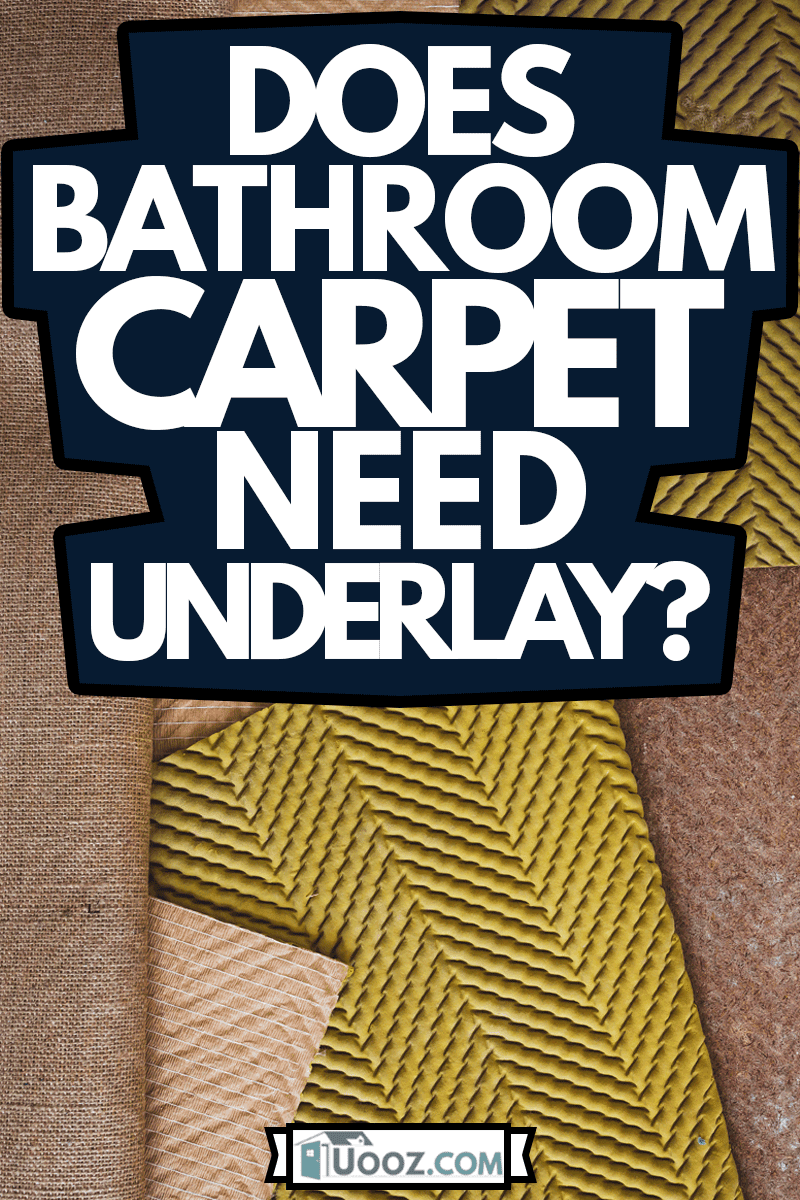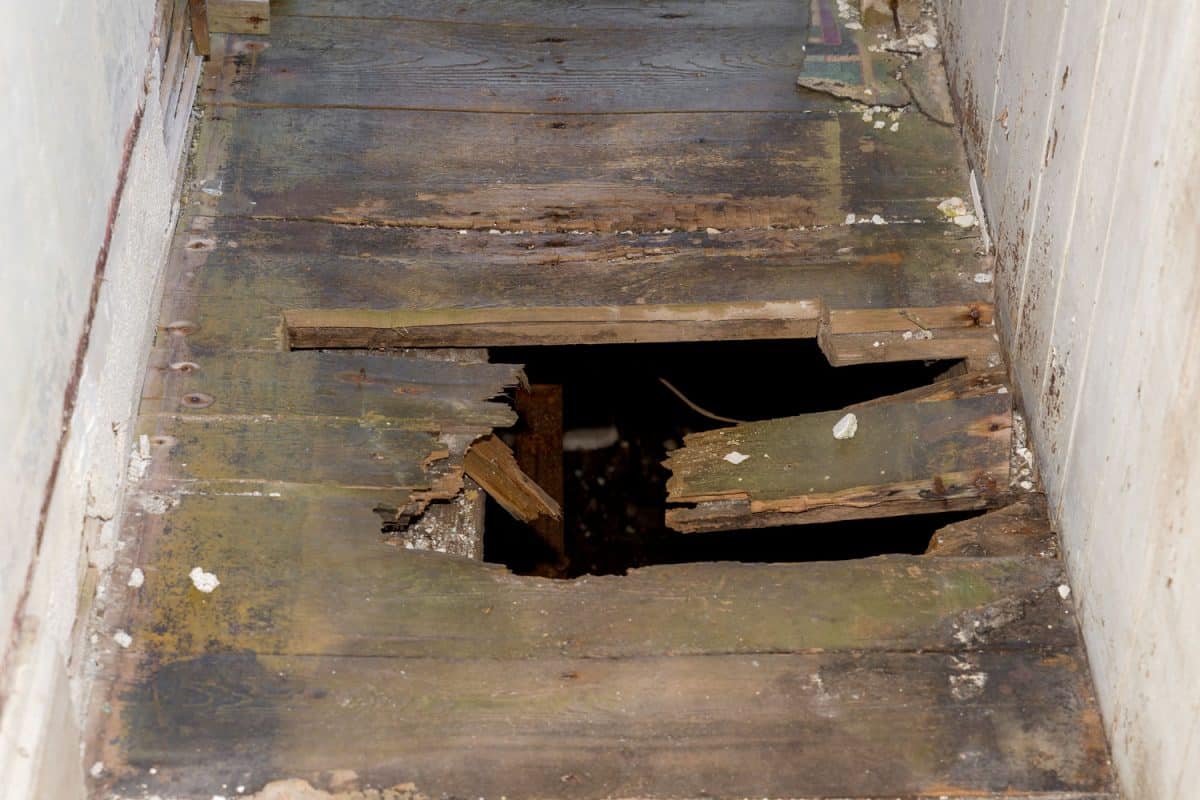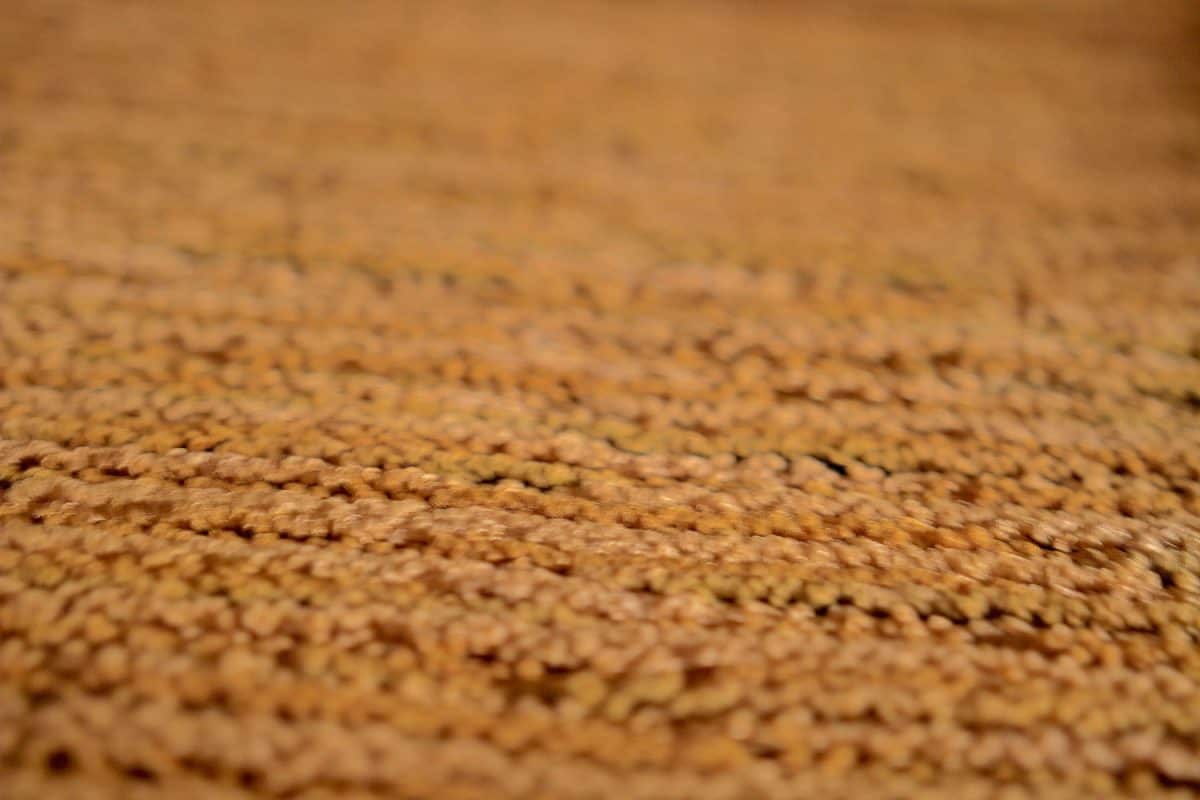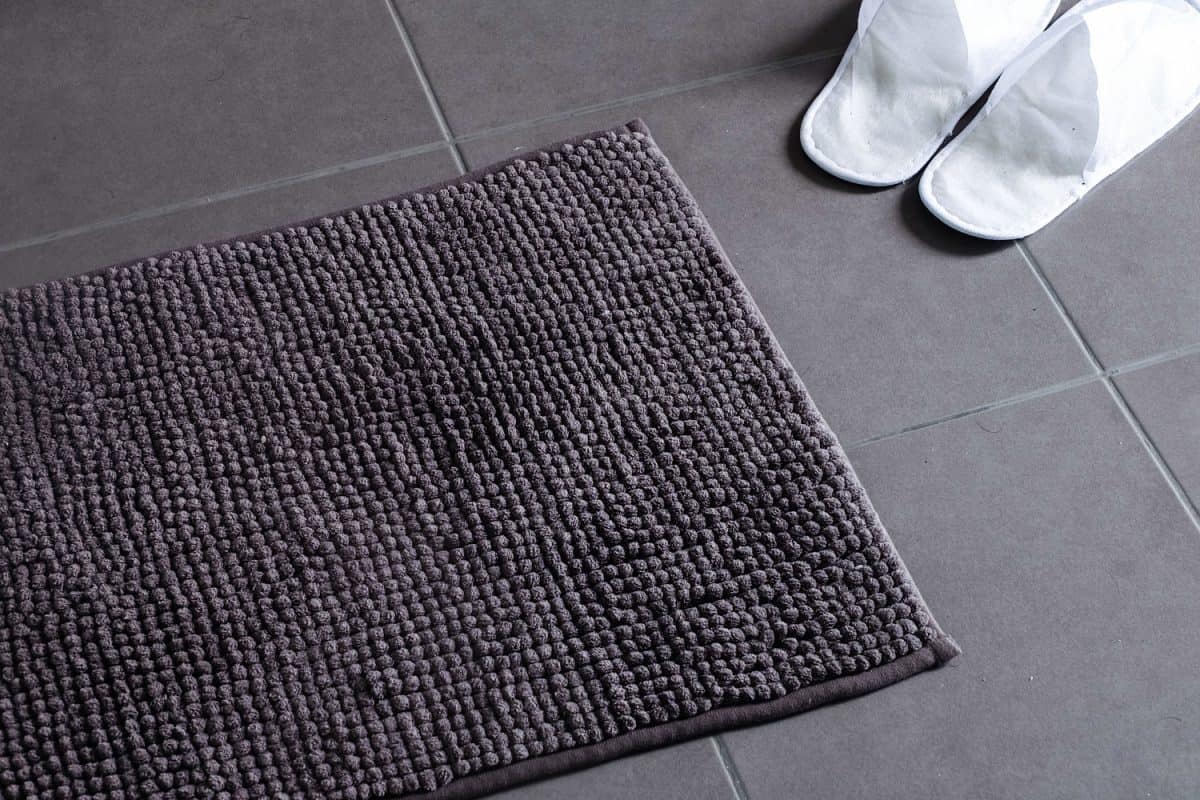Using a carpeted floor for your bathroom is a little unusual, so you are likely wondering if it needs an underlay. Adding wall-to-wall carpet in the bathroom will give you a lot more comfort, but it can also result in serious issues if you aren't careful. We have thoroughly researched if a bathroom carpet requires an underlay.
Yes, it is ideal for any carpet to include an underlay, especially carpeting in the bathroom. An underlay will improve the carpet's comfort, insulation, and lifespan. But most importantly, it will defend the carpet from water damage. This is essential in bathrooms, which are highly prone to spills and leaks from the toilet, sink, shower, and bathtub.
Whether you don't want to replace an existing carpet in the bathroom or plan on installing a new one yourself, it's crucial to prepare correctly. Keep reading to learn what carpet is suitable for a bathroom, if you can get waterproof carpets, and what problems come up if you don't give it an underlay.

What happens if you don't put underlay under carpet?
Click here to see this underlay on Amazon.
The underlay, also known as an underlayment, is a thin layer of protection between the carpet and the subfloor. It is mainly used to guard your carpet against water damage.
It can also improve comfort by increasing the carpet lifespan, reducing noise, and insulating more heat. You will lose all of these benefits if you don't install an underlay for your carpet.
Water Damage

Bathrooms are unique because they are small and probably use more water than any other room in the home. The supply and drain lines for the tub, toilet, and sink make the room unusually vulnerable to water damage.
You are also likely to cause some spills yourself, just from washing your hands or stepping out of the shower. Just running all of this water will fill the room with moisture, which can easily build up in smaller rooms.
And because moisture rises, it can build up directly underneath your carpet. This is especially easy on typical plywood subfloors or bathrooms on the second floor, which has a wood foundation. Wood is a porous material and extremely weak to water damage.
The primary issue with water damage is mold. Specialists such as Mansfield Plumbing agree that moisture and heat in bathrooms is a perfect breeding ground for mold.
They also explain that mold fungus spores are dangerous to your health and structure. Mold can break down wood, which is called "rotting."
This will cause your wood to squeak, splinter, and even crumble. You can read the post, "Does Hardwood Flooring Need Underlayment?" to learn why even hardwood floors require an underlay.
The CDC also warns that people with asthma or allergies to mold can face severe reactions to this buildup. Symptoms can be serious, including fever and shortness of breath.
Reduced Lifespan
Your carpet will not last as long if an underlay doesn't support it. Consider that you are likely going to use the bathroom every single day. This amount of traffic can break down the carpet's strength over time.
You can find underlays made from strong or absorbent materials, like foam and cork. This added support will reduce everyday strain on the carpet. In the long run, you'll save the time and money of replacing all your bathroom carpeting.
Reduced Comfort
Your carpet won't just feel less comfortable to walk on if you don't use an underlay. It will also lose the increased management of noise and temperature. Unfortunately, the most common reason to use carpeting in a bathroom is to improve comfort.
Although the bathroom can steam up, the floor may remain cold, especially in areas with colder climates. If you add an underlay to the carpet, it should better retain the warmth for your feet.
Also, bathrooms on the second floor can get pretty noisy. Many underlays allow you to control the noise that travels below. This can be especially handy for kids' bathrooms. But it is generally helpful if the upstairs wood is squeaky or if the bathroom is often used in the middle of the night.
What carpet is suitable for a bathroom?

The ideal carpet for your bathroom should dry quickly and be easy to clean. As such, you should consider both the material of the carpet and the type of pile. The "pile" of a carpet refers to the height and design of the fibers.
Can you get waterproof carpet?
Click here to find this nylon bathroom set on Amazon.
Firstly, you will likely need a synthetic carpet instead of one made from natural materials. Although natural carpeting is often considered more comfortable, it will also absorb more water. Nylon or polyester are synthesized materials that are designed to reflect water.
Most carpets sold as "waterproof" only protect the surface from soaking in water. This doesn't prevent moisture that rises from beneath the carpet. So, you'll likely still need an underlay.
However, some carpets can be sold with a built-in underlay. Finding a carpet with surface protection and an attached underlay is the closest to a genuinely waterproof carpet.
Low Pile
Many people prefer to use a carpet with a "high pile," which means tall fibers. This looks more luxurious, and it's more comfortable to walk on. However, it also retains more water than usual.
Instead, you should also select a carpet with a pile that is both low and cut. A "cut pile" means that the traditional loops of the fibers have been cut off. This will make it much easier to clean. However, the surface will be less comfortable and look less fluffy.
You can further read our post, "What Type Of Carpet Is Best For Bathrooms?" for deeper details on selecting the right carpet for your home.
Are carpet tiles okay for a bathroom?
Click here to find these carpet tiles on Amazon.
Carpet tiles are unique because they are installed in pieces using special adhesives, one square at a time. This means that if any spot in the bathroom floor becomes moldy or damaged, it can easily be replaced with a new tile.
Carpet tiles are usually sold with a low pile, making them less likely to hold too much water. However, it's important to consider that carpet tiles can still be as vulnerable as any other carpet.
You would still need to make sure that the floor adhesive is designed for water defense. Not all of them provide this feature.
Can you use your old carpet as underlay?
No, old carpets are not an appropriate substitute for underlayment. Firstly, consider that you are most likely to install a new carpet if the old one no longer provides what you need.
But any damage or wear that the old carpet has will only affect the new carpet. For example, if the old carpet doesn't have enough cushion, it will transfer over.
The new carpet will be more likely to quickly weaken in the same spot. Or if mold is allowed to grow, it will continue to rise, and the fungus will also infect your new carpet. You may not even notice this over time, so even more mold will fester and make the problem worse.
Also, the carpet will not provide any of the other benefits that underlays can offer. That's because the old carpet already needed these additions, such as noise and temperature control.
Summary

You are often barefoot in the bathroom, making thick and warm carpets an attractive idea. However, it's still essential to protect your bathroom and floor and your health from water damage. Using an underlay will increase the longevity and comfort of your bathroom carpets and protect you from dangerous mold spores.



